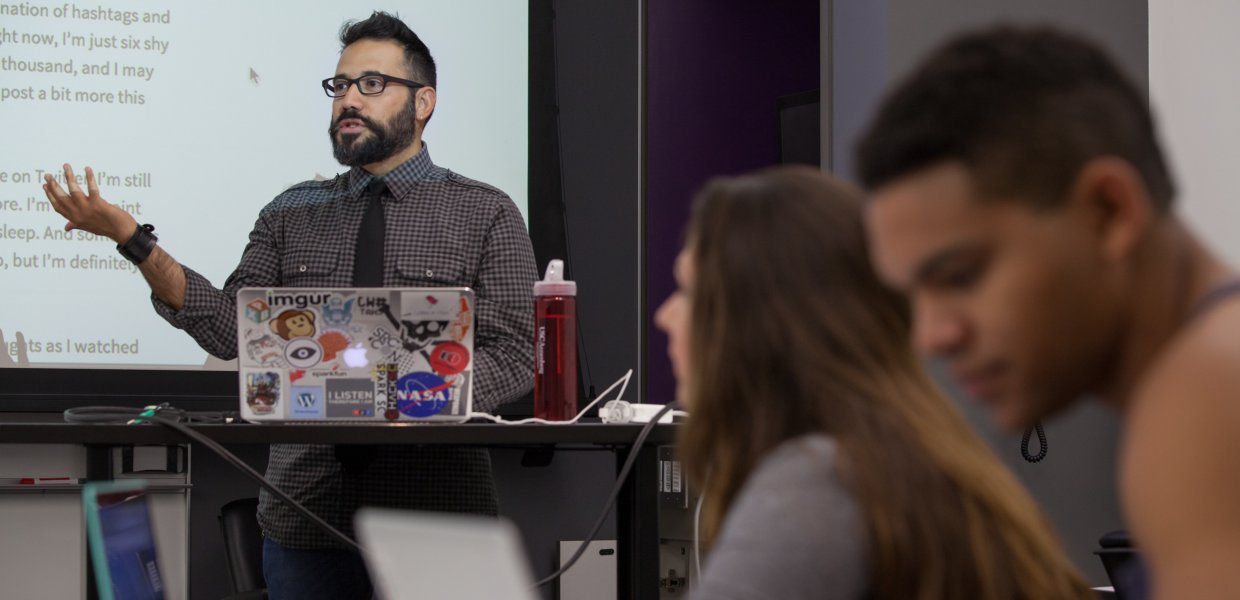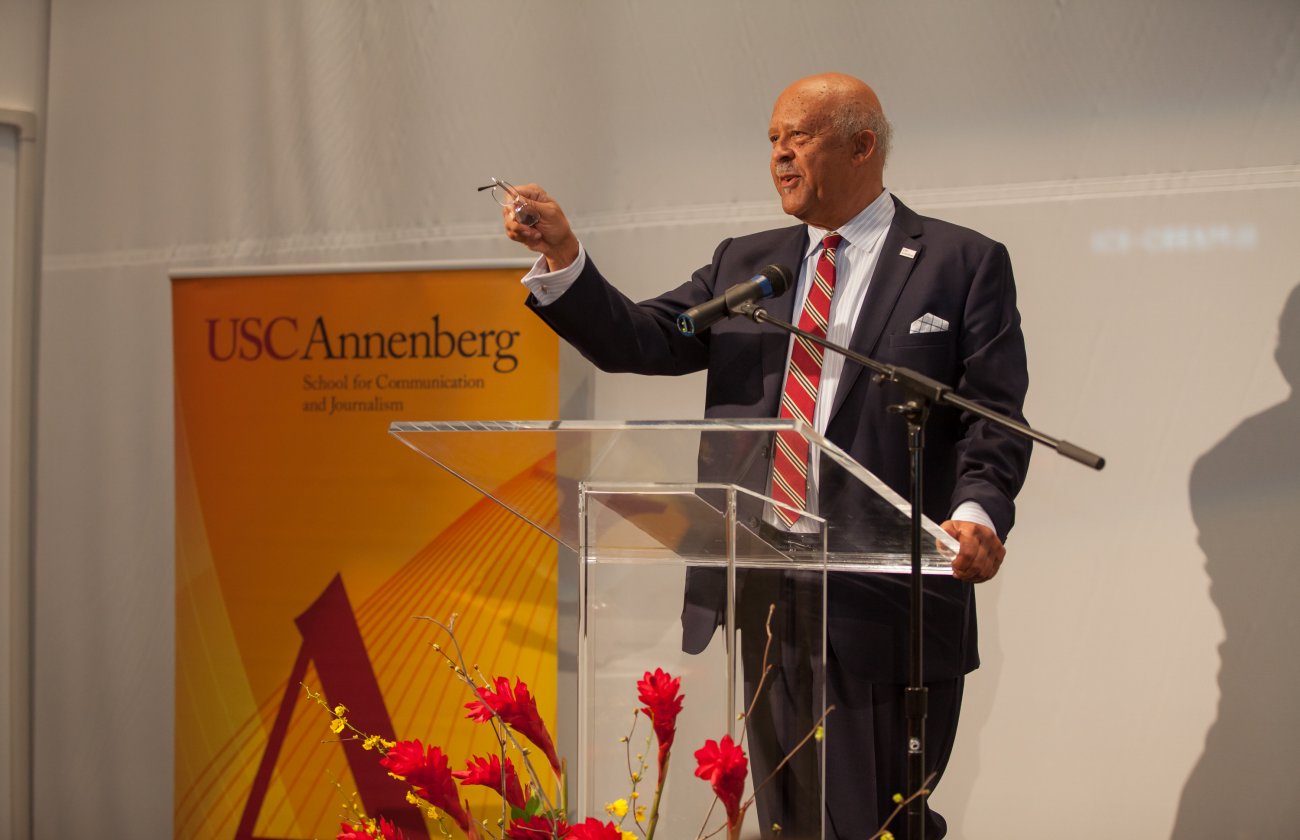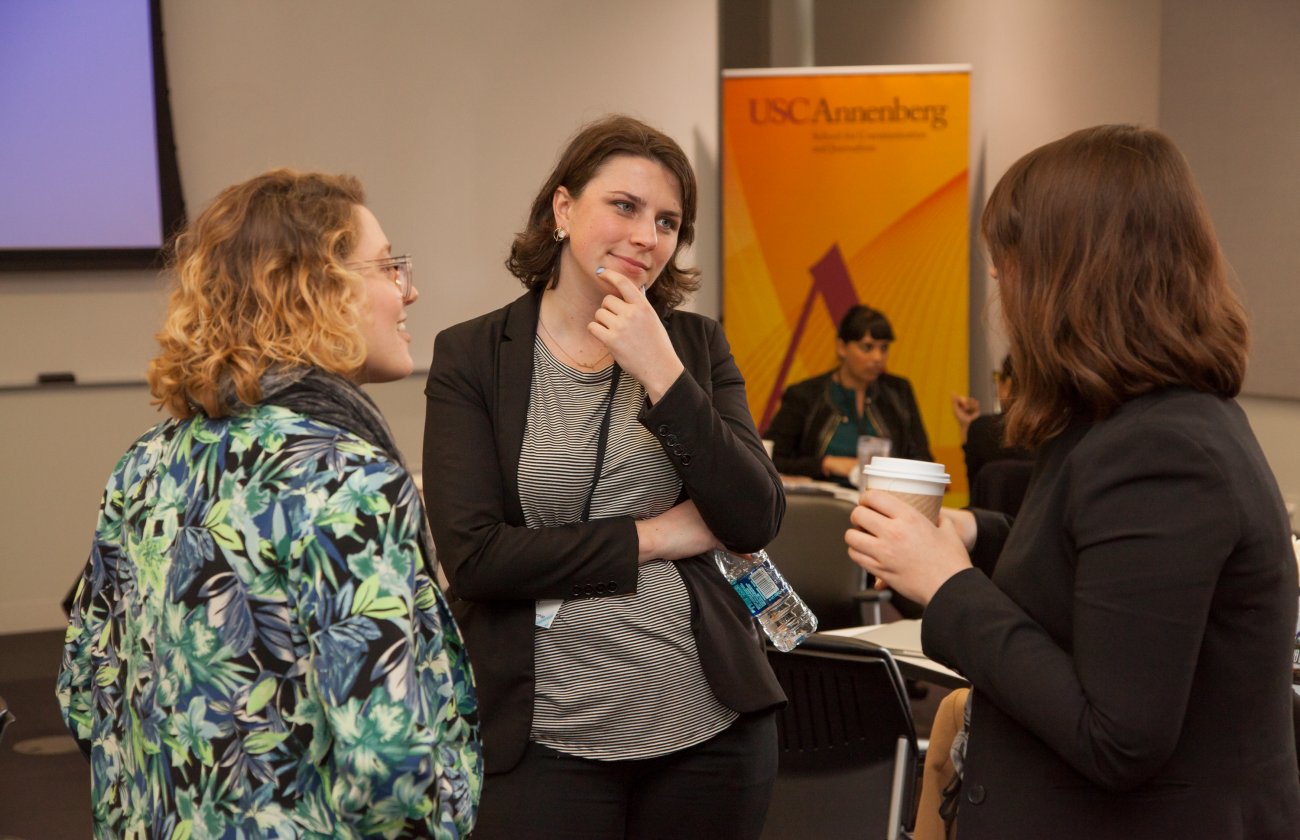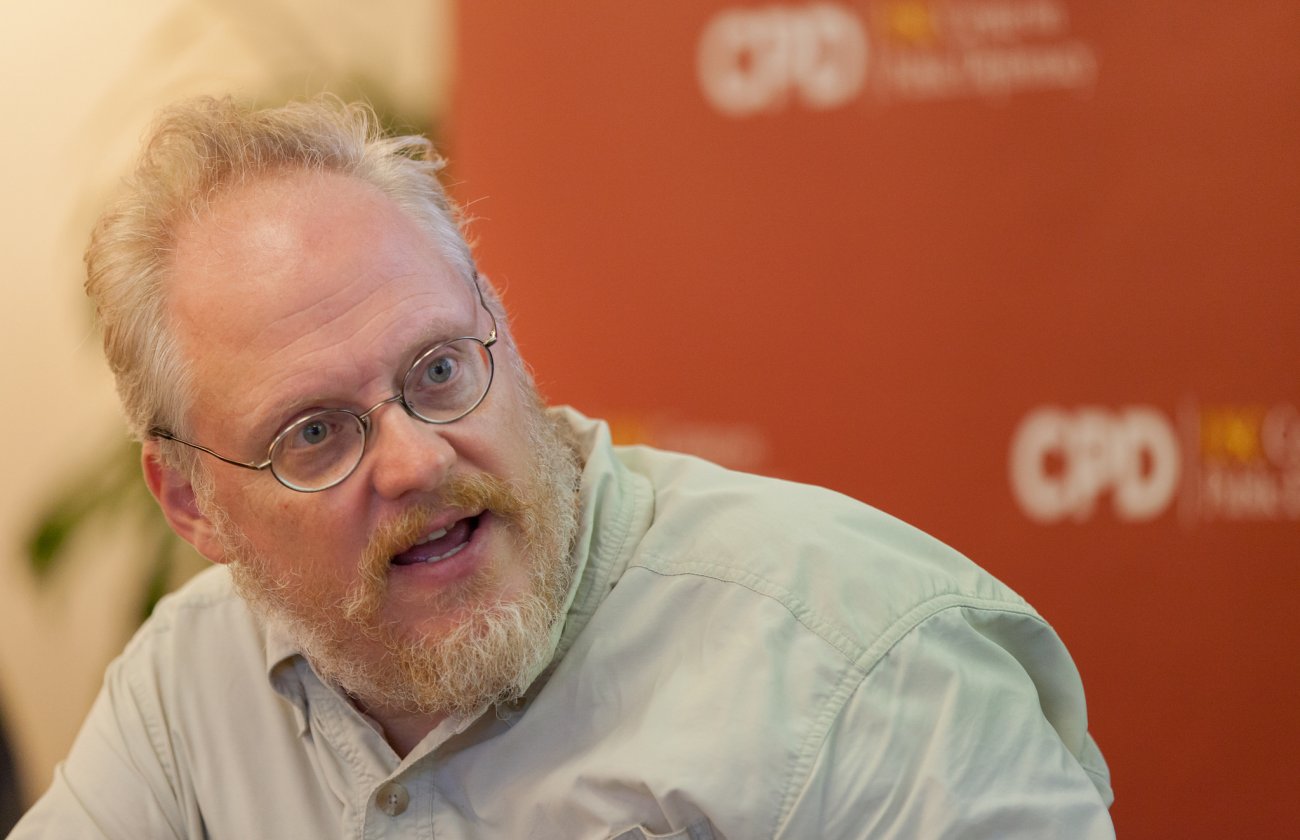Inside the classrooms at USC Annenberg, students are the ones typically tasked with answering the hard hitting questions. "Five Minutes with..." turns the table on faculty members to ask them the questions.
In 2007, USC Annenberg professor and notable digital journalist Robert Hernandez attended his first Online News Association conference. Eight years later, he’s a board member and co-chair of the 2015 ONA conference.
We recently caught up with Hernandez to talk about his role at this year’s conference and the importance of USC Annenberg’s presence.
What will you be doing at this year’s conference?
Everything. I helped out with the programming, the identifying of the speakers, the themes of the conference and things of that nature. Plus, I am presenting. I’ve been fortunate enough to present the past few years. I’m presenting at three sessions. So I’m part of the program, and then with USC Annenberg, we’ve set up some stuff. I’ve been leading in that, taking an active leadership role to make sure we have a great, strong presence at the conference.
What are you most looking forward to at the conference?
This conference is basically my family, my squad. I have multiple events that I put on every year. I have one for a weekly chat I run, called the #WJCHAT. That’s Friday night. I’m really excited about that. It’s one of the biggest parties at ONA. It’s really grassroots and based on social media. It’s a wonderful community there. And then I have another event that happens at 1 a.m. on Sunday, which is kind of like the unofficial after, after, after-party. I’ve been doing that for a few years.
But the programming is also pretty impressive. We’ve got so much diversity of every type, of course, gender, ethnicity, but also topics and skillsets. We’ve got virtual reality. That’s one of the things I’m involved with. We’ve got anything and everything, podcasting, really cool hands-on stuff that is for everyone, especially our students.
We at USC Annenberg, we’re sponsors for this conference because it’s in our backyard. We have our own session, a sponsored session. It’s the first time ONA is doing something like that. It’s about the next job and how people can prepare for that, not just the next job, but the next new job. What are the jobs that are yet to be defined? How can people prepare for them? How do people hire for them? A year or so ago, social media wasn’t a thing or community engagement wasn’t a thing. Podcasting or VR is becoming more of a thing. Development and all those new crafts and skills that are changing the newsroom and the industry, how can people prepare for it? That’s what we’re going to be talking about.
You’ve been attending the conference for almost a decade. What changes have you observed since the first time you attended the conference?
I read recently that in 2005, there was a record attending at the conference: 390 people. Ten years later, we’re going to be over 2,000. This is THE digital journalism conference in the world. We have always been in the forefront of teaching people and training people but also empowering people, empowering the doers. It’s really about cutting edge folks. We pride ourselves on being diverse and reflective and inclusive. We’re constantly thinking and trying to make sure we’re living up to what we think are our ideal missions.
This is the only kind of conference that brings together all aspects of digital, broadcast digital, TV and video and audio, but also startups, social media, coders, designers, as well as reporters, editors. They all come together at this conference and it’s gotten bigger and bigger and bigger. This is the first time we’re taking over an entire hotel. Usually, we share it with other people. This whole hotel is going to be everyone connected to the conference. Every person in that building will be connected to ONA. So, that’s pretty exciting. We’ve grown as a community of digital misfits, back in the day, trying to justify ourselves as journalists, to leading innovators for the industry.
Why is it important that USC Annenberg has a strong presence at the conference?
There are several reasons. We do some amazing, innovative, kickass stuff here, but a lot of people don’t know it. It’s an opportunity for us to show some swagger and show the things that we’re doing. One of the most amazing things that we have to offer to our students and foster innovation is our kickass building. So we’re bringing the building to ONA. If all goes well, my students, who are a part of this VR journalism class, are going to produce a VR tour of the building. We’re getting custom Google Cardboard printed and handing them out at the conference. They put them on and take a virtual, immersive tour of this building. Other schools, if they doing anything like VR, it’s not the students. It’s an outside production company that they’ve hired to do that stuff. Here at our school, it’s the students. And it’s not just journalism students. I’ve got gaming students, computer science students, public relations and communication, it’s all across the school, cinema students. They’re coming together, collaborating and making something cool. So, it’s important for us to have a presence so we can show off that stuff.
ONA has something called the Midway and USC Annenberg has a sizeable booth there. We’re going to be demoing a bunch of stuff, to showcase, not only put our reputation out there. But also, this is LA, and this conference, we’re the hosts. We’re pretty damn big and help shape the city. So it’s important for us to be good hosts to this conference.
This interview has been edited for length and clarity.








